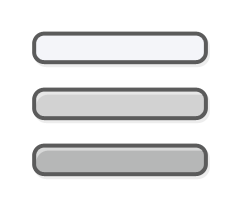Steam telepítése
belépés
|
nyelv
简体中文 (egyszerűsített kínai)
繁體中文 (hagyományos kínai)
日本語 (japán)
한국어 (koreai)
ไทย (thai)
Български (bolgár)
Čeština (cseh)
Dansk (dán)
Deutsch (német)
English (angol)
Español - España (spanyolországi spanyol)
Español - Latinoamérica (latin-amerikai spanyol)
Ελληνικά (görög)
Français (francia)
Italiano (olasz)
Bahasa Indonesia (indonéz)
Nederlands (holland)
Norsk (norvég)
Polski (lengyel)
Português (portugáliai portugál)
Português - Brasil (brazíliai portugál)
Română (román)
Русский (orosz)
Suomi (finn)
Svenska (svéd)
Türkçe (török)
Tiếng Việt (vietnámi)
Українська (ukrán)
Fordítási probléma jelentése



In general, nuclear reactors are reasonably powerful and efficient without any need for clever designs, but can be made extremely powerful and extremely efficient with clever designs.
That depends. The nominal power output of each reactor is 40MW, which is increased by 100% for each adjacent nuclear reactor. 1x1 gives you 40MW per reactor, 2x2 gives you 120MW per reactor, 2x10 gives you (on average) 144MW per reactor, etc.
So I guess the answer is anywhere between 950 and 3800.
What I do is make 2x2 reactor setups, 480 MW each, and deliver fuel via train.
https://www.youtube.com/watch?v=CRsTHPgwTzY
This video explains how to set up your reactors to only use fuel when they need it. By default reactors have an "always on 100%" behavior. They'll heat up until they reach the 1000 degree cap, at which point they'll still use fuel cells at the same rate except the heat they're producing is simply wasted instead of being used to generate power.
Using the simple circuitry shown in the video, the reactors will turn on for the time it takes to use 1 fuel cell, during which they'll store up heat (in the reactors, heat pipes, and exchangers) and store up steam (in the tanks) and then they'll shut off and wait until the steam level drops below a certain amount. So that way you're only using the fuel that you need and not wasting any.
Also, it's probably best to use logistic chests to request fuel cells and remove the used ones instead of using the belts shown in the video -- it's an efficiency thing.
I'll post my newest set up tomorrow, as I'm heading to bed now for early work start.
It just depends on playstyle. I like to be as efficient as possible. It's a pain to tear up an exhausted mine and go build another one somewhere else. It's all the more complicated for uranium because of the extra equipment for the sulphuric acid. So if I can connect up a few wires and cut my fuel consumption in half, then of course I'll do it.
The same goes for having all that extra storage. Leaving resources in the ground longer means you have time to research more mining productivity upgrades. So the longer you wait to mine it, the more valuable it becomes. Filing up a logistic network with a few thousand extra cells (or even just a 20- or 30-tile belt-length) represents wasted resources when a chest requesting 1 cell at a time will do the job just fine.
In regards to ore in the ground, I'm pretty sure there is only one train that carries ore from the mine to the processing. With the processing wired to only run when 238 is below a set value, unless ore is needed, the train never completely unloads and leaves. Requests and providers at ore load station are set to minimal amounts, thus making the miners not work as none is needed, which leaves the ore in the ground as you say. Ore processing being set to only function if 238 is below that value, is effected by the used cell reclaimation, as that is constantly putting 3 238s back into the system per cell.